Thanks to all for the kind holiday wishes. It feels good to have the holidays behind me for another year. It doesn’t feel so good to be facing more reports of “unprecedented.” Happy to have you follow along as I delve back into my autumn ramble through Europe, which believe it or not, now in the face of Omicron, seems like a simpler time. Hope you are all healthy and warm…Now back in time to September, making first landfall in Denmark!
After two nights at sea, the Smyril Line Ferry from the Faroe Islands made landfall at the seaport town of Hirtshals at the top of the Jutland peninsula in northern Denmark…not exactly a tourist Mecca!
Coming off a high from fun times in the Faroe Islands with my new found friends Lisa and Lynn, then cracking open my cocoon of cabin comfort on the ferry (which was really more like a cruise ship,) landing at the dock in Hirtshals was an abrupt awakening. To make life more complicated, I had been using local SIM cards, so I was in the middle of the massive, intimidating dockyard with no direction and no internet. As so often happens when I am traveling and hit a bit of jam, I get by with the kindness of strangers. A local couple who spoke English knew where to send me to catch the “unmarked” bus into town. I would then need to transfer to a train to Tornby, where I had booked a guesthouse for 3 nights.
I would soon find out Tornby wasn’t exactly a tourist Mecca either. The only restaurant in town was a pizza place owned by Afghanis. Given the US was in the throes of a botched exodus at the time, I felt a little awkward. (Silly me for making conversation with the pizza guy while waiting for take-out.) So I stocked up at the grocery store, since my lovely guesthouse had a shared kitchen.

One of the many bicycle paths that run along the coastline of Denmark. The West Coast Trail runs 347 miles along the west coast all the way to Rudbøl near the German border.
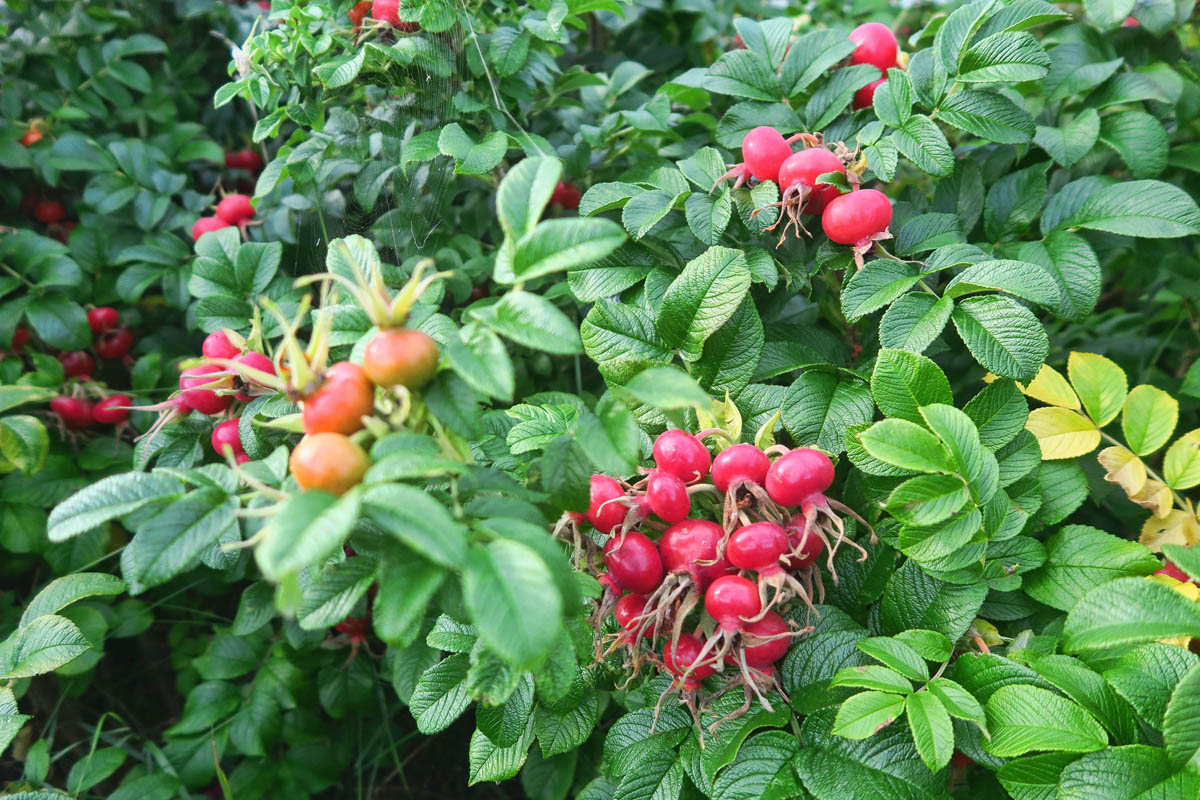
Riding a bike through the quiet Danish countryside is like a step back in time, riding along quiet rose hip-lined lanes.
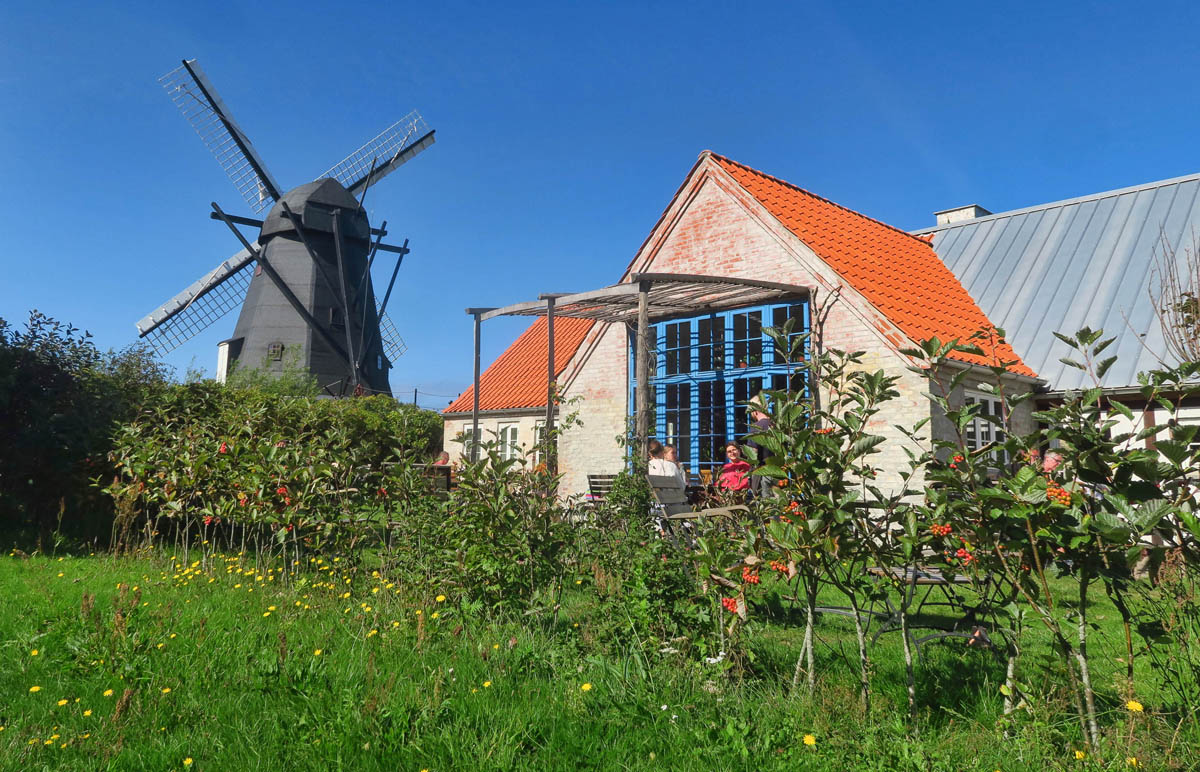
Nice little coffee and “Danish” shop along the bike route.

The lighthouse is near the little seaside town of Lønstrup, worthy of a visit in of itself.
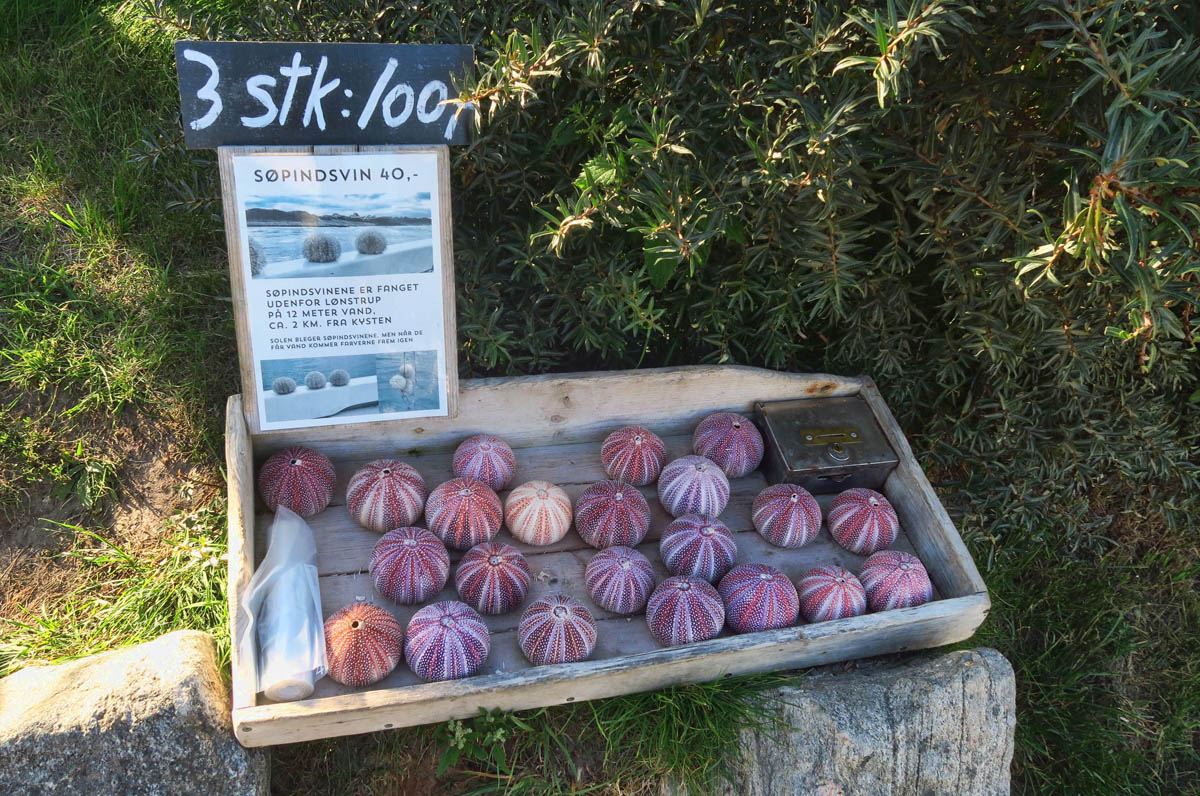
The seaside town of Lønstrup is very quaint, with lots of shops and outdoor restaurants along the way.
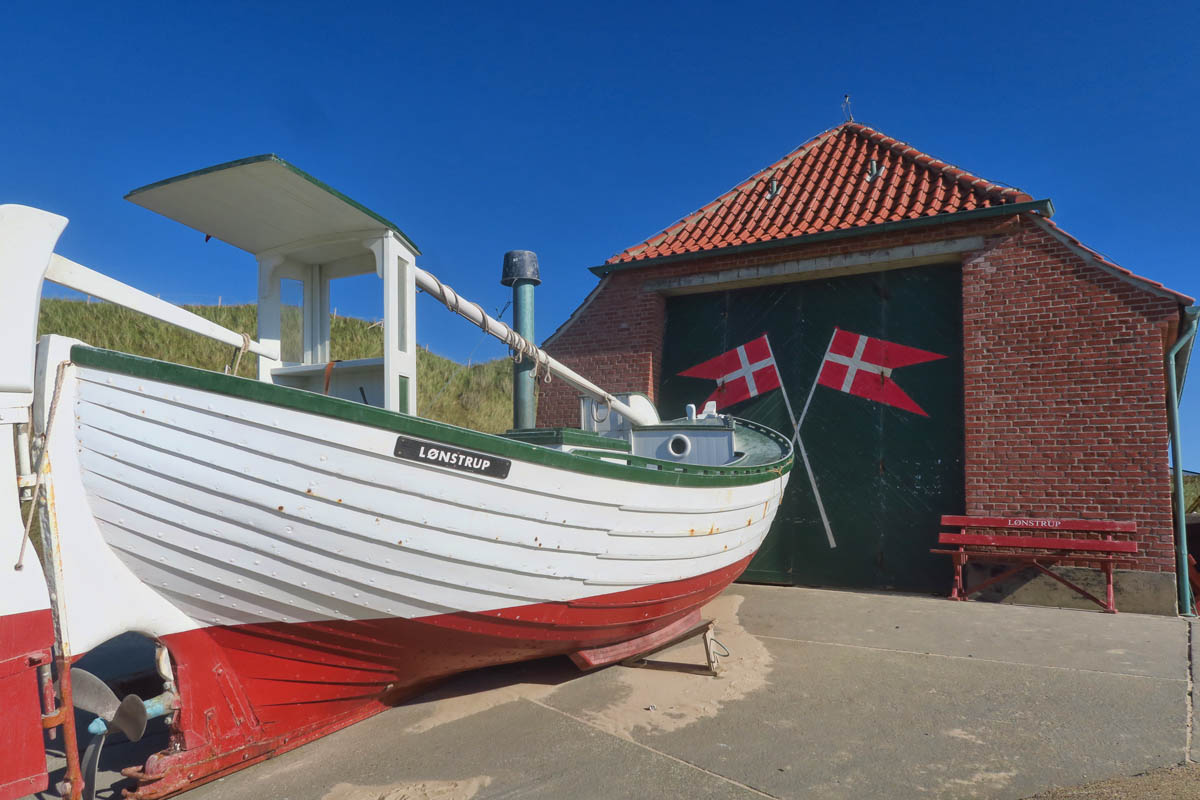
Lønstrup Lifeboat Station
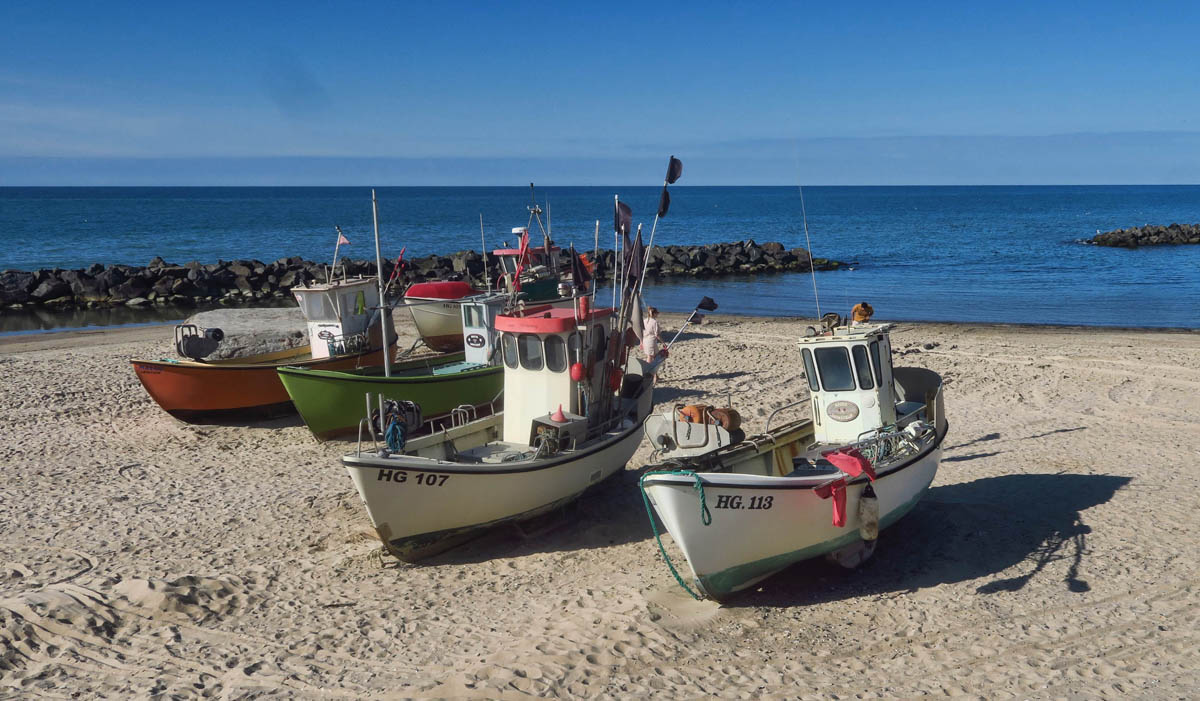
Quite the place for a Sunday stroll…
Throughout this entire journey, I have never known how far I would make it, due to rapidly changing COVID restrictions. Consequently, my research on Denmark fell short, as I quickly realized there’s nothing to do in Tornby unless you have a car. Thankfully, the kind woman who ran the guesthouse insisted I borrow her bike. I had graciously declined for fear I damage it in some way. However, I awoke the next morning to find her husband outside my door, oiling the chain and inflating the tires. So I rode 40km (25 miles) my first day in Tornby. I didn’t have to worry about something to do on the second day, because after 25 miles on a bike, I couldn’t get out of bed! 😉
Why would a person ride a bike 25 miles on their first day on a bike in a year? Well, to see a lighthouse, that’s why! And not just any lighthouse….the historic Rubjerg Knude lighthouse, first lit in 1900, operated until 1968. The lighthouse sits atop a cliff 200 ft above sea level. However in recent years, the sandy slope has been degrading, with the coastline moving inland. So in 2019, the historic old lighthouse was moved 70 meters (230 ft) back from the slope. This involved inserting steel beams around the foundation, laying tracks between the two locations, and pulling the lighthouse into position using “roller skates,” jacks and hydraulics.
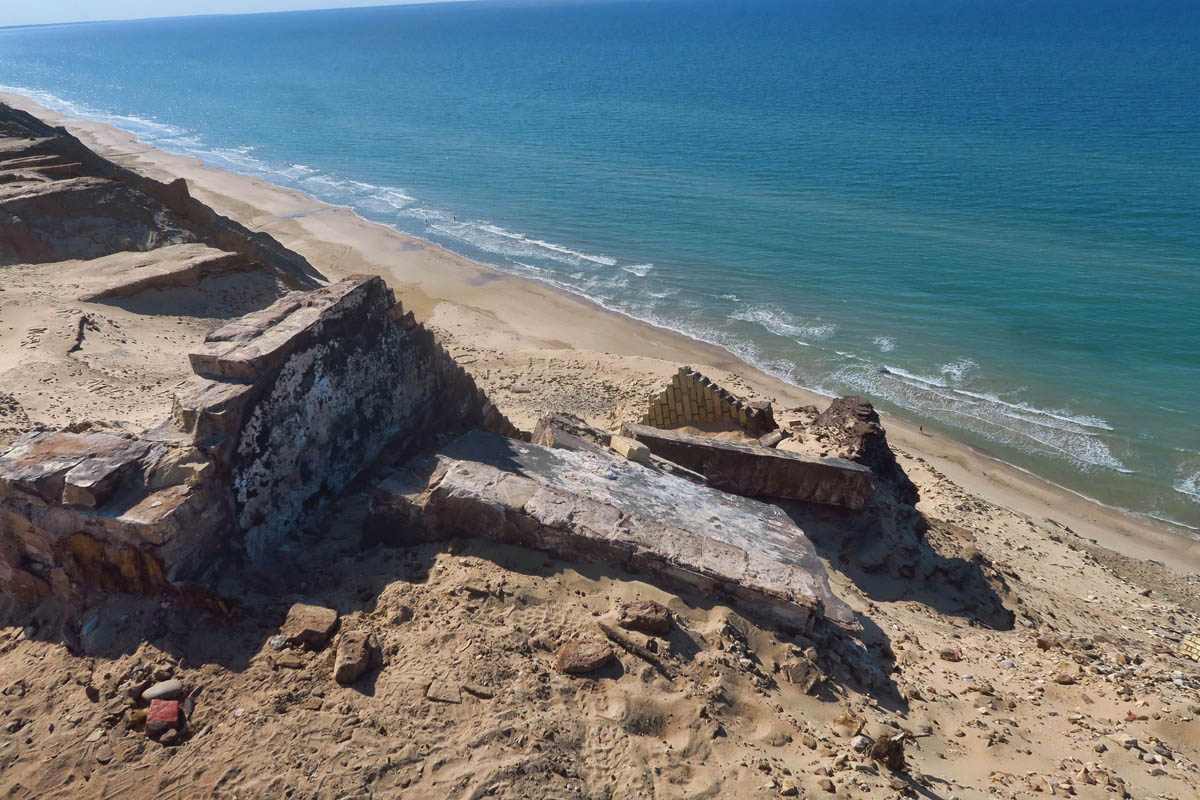
Here, you can see the old foundation of the lighthouse slipping down the eroding 200ft dunes.

The gorgeous, historic Rubjerg Knude, now just a tourist attraction, but one lovingly preserved.
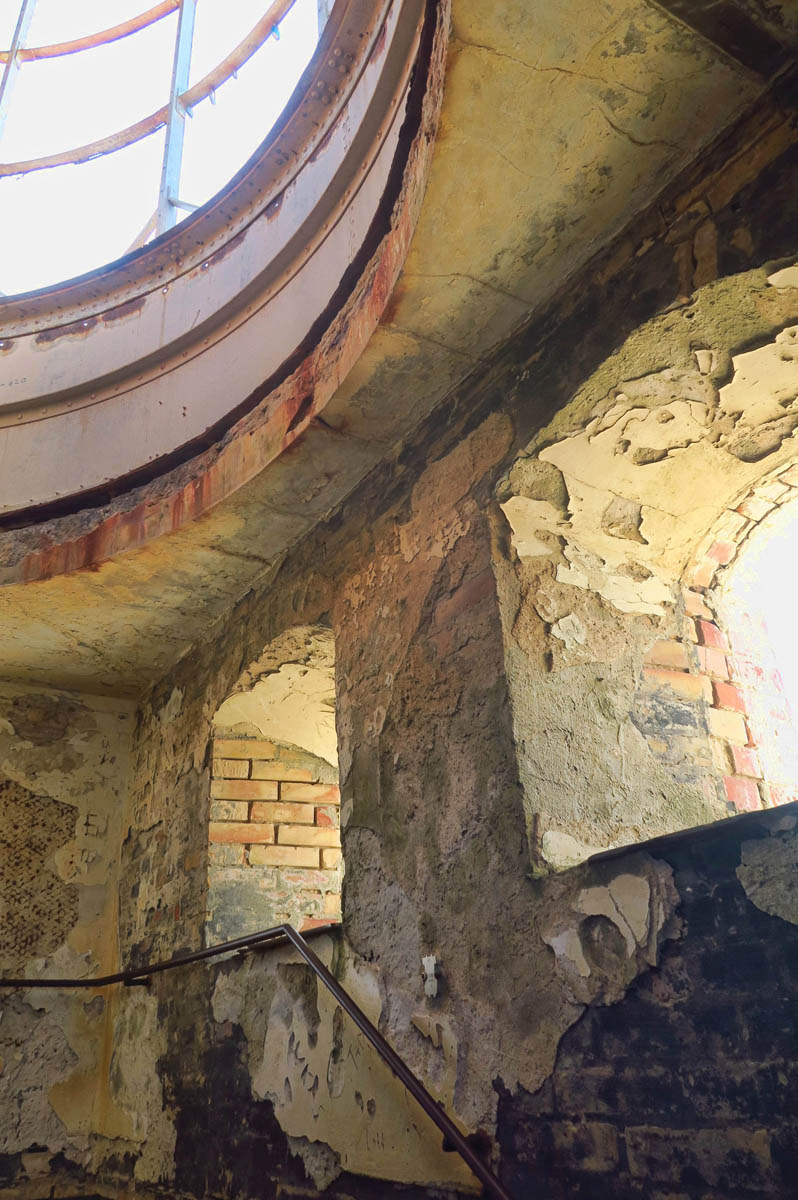
It is possible to climb the spiral steps to the top for a looking point. The lens has been replaced with a metal prism sculpture to represent the light that once served as a beacon to guide ships along Denmark’s coast,

The view from the lookout point
The foundation is now prepared for future transport, as the dune moves at an average speed of 20 meters (65 ft) a year. It does my heart good to know this stately old “retired” beauty is loved so much that such effort has been made to preserve her for her historic value.
Before I started working my way south through Denmark, I first wanted to travel to Denmark’s northernmost point to visit the seaside town of Skagen. Initially known as a fishing town renowned for its herring industry, it later became an artist colony turned popular summer vacation destination.
My reason for wanting to visit was to tour the Skagen Museum which features the works of the turn of the century Skagen Painters. I have often said if I can’t paint, I like to immerse myself in the works of those who can. And I found the story of the Skagen painters to be reminiscent of the the captivating writer and artist movement in Paris in the 1920’s
Being so far north, Skagen is known for its warm summer light. The furthest northern tip of Denmark sits between two seas, Skagerrak and Kattegat, so close to each other that the water acts as a mirror, reflecting the light upward. The white sand of the surrounding beaches serves to reinforce the effect. This special light began to attract artists from the 1870s through the turn of the century, who would gather in summer to paint plein-air. This group of Scandinavian painters, having studied in France, was inspired by the impressionist painters.
The Skagen Museum has quite an impressive collection of works. In fact, while I was there, a few paintings from its most notable painter, P.S. Krøyer were on loan to the Musée Marmottan Monet in Paris.
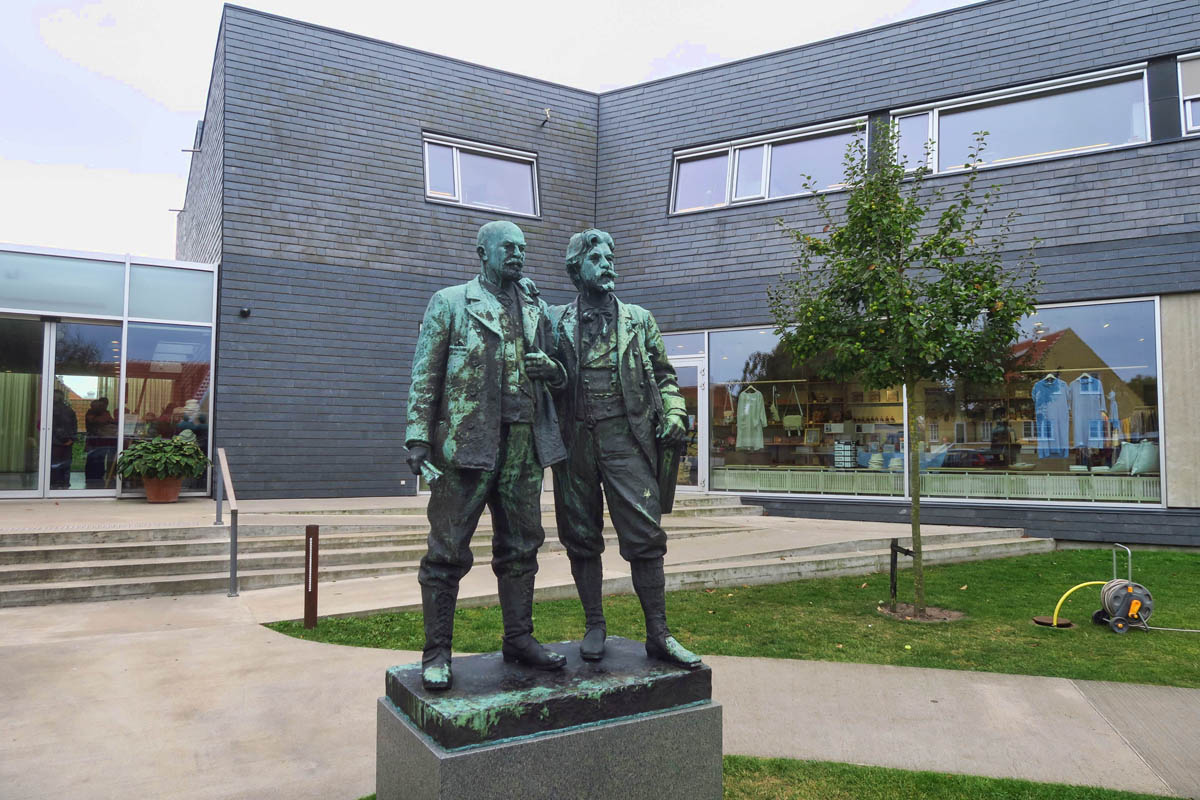
This statue of the two most famous of the Skagen Painters Michael Ancher (left) and Peder Severin Krøyer (right) has been standing in front of the Skagen Museum since 1928.

P.S. Krøyer epitomized this hat, now sold in the museum. I like that they are made in individual sizes, not “one size fits most.”

This is Krøyer’s most famous painting titled after the evening light for which Skagen was known, “The Blue Hour,” painted in 1907.

While this was by no means one of the best works in the museum, I liked it because it is a double portrait. P.S. Krøyer painted his wife, Marie, and then on the same canvas, she painted him.

In addition to the museum, there are two artist’s homes included in the admission. Part of the museum exhibit, Anchers Hus – home of the artists Michael and Anna Ancher. They purchased the house in 1884 and lived in it until Anna’s death in 1935.

Drachmanns Hus still looks very much like it did when the Skagen painter and author Holger Drachmann lived there from 1902-1908.
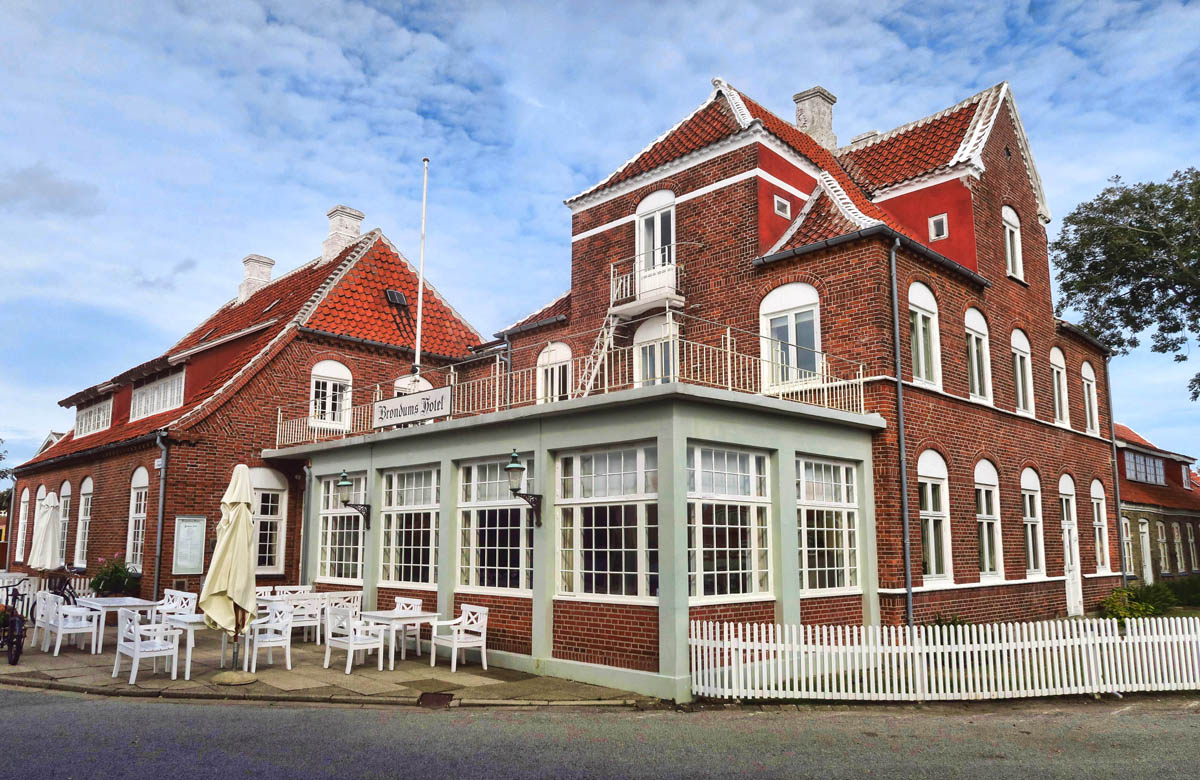
A common gathering place for the painters was the Brøndums Hotel. It still operates as a hotel today.

The Brøndums’ dining-room became the centre of the artists’ social life and was filled with the paintings they donated to cover the cost of board and lodging. It is now part of the Skagen Museum.
While visiting Skagen, I stayed in a very charming guesthouse, Toftegården, which used to be a horse farm dating back to 1937. This family-run farm has been converted to a modern guesthouse, only a 10 minute walk from the train station.
The very accommodating guesthouse owner enthusiastically shared historical info about the town. When I commented on the consistent use of the golden yellow color scheme throughout the town, he told an amusing story. The houses were once all painted white. Being in such a remote location, they ordered paint in bulk. One year, the wrong order was shipped, and instead of the white they had ordered, the bulk paint shipment received was this warm, buttery yellow. Unable to return it, the townspeople just went with it, and the color scheme stuck. Now, homes, hotels, retail establishments throughout the town all radiate this warm color.
Whether truth or fable, I still loved the story. Not only were the turn of the century Skagen Painters drawn by the warm light of the Skagen summer, the townspeople have chosen to carry it through today. I have to say, it really contributed to the summery ambiance of the town.
Here are my favorite scenes from this cozy, charming, sunny yellow seaside town:

The Skagen Train Station.
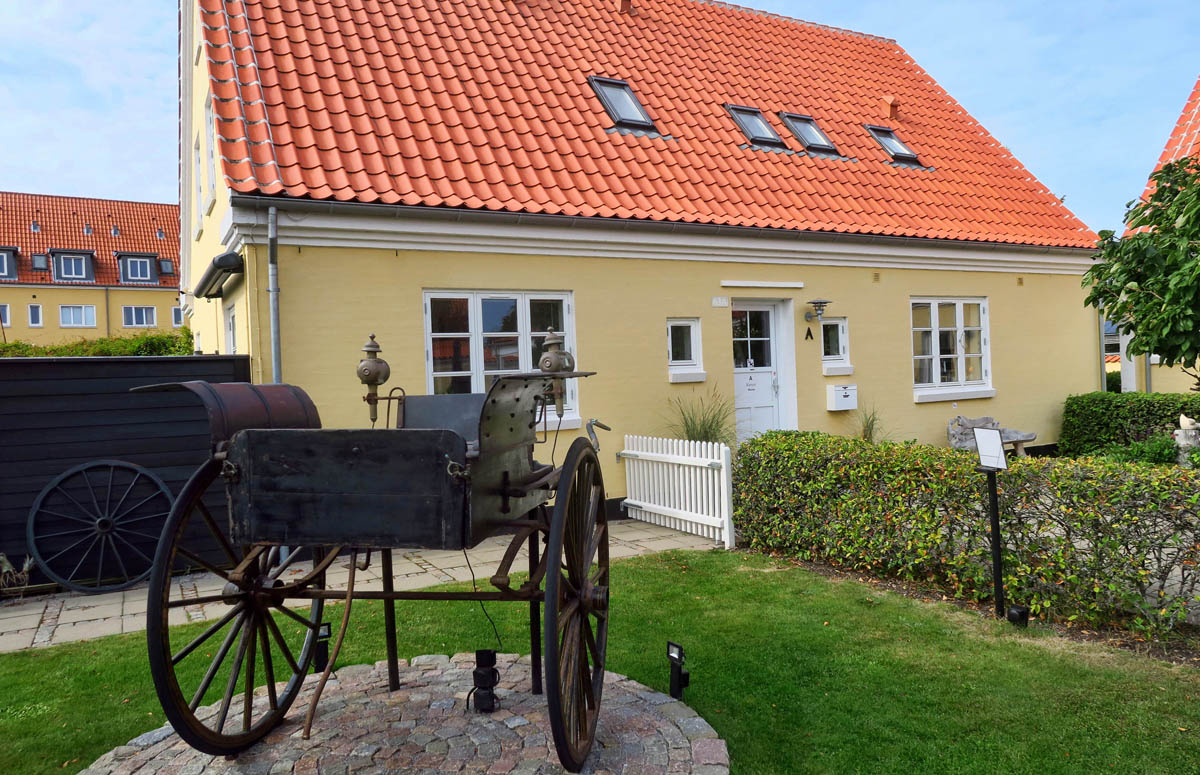
One of the lodge buildings at Toftegården Guesthouse, once a horse farm dating back to 1937.

Beautiful yellow color scheme is carried through on private homes as well as businesses.

The local pub gets in on the paint job.
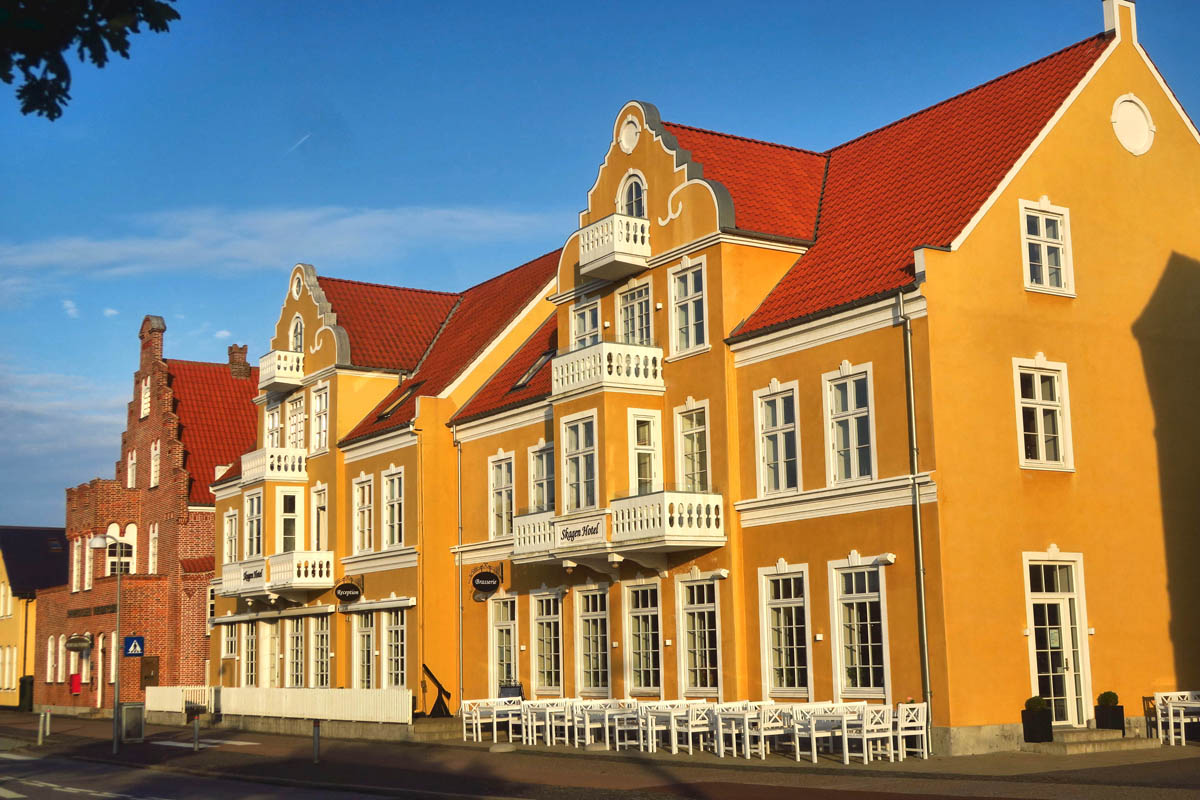
The Skagen Hotel radiates warmth on this early fall day.
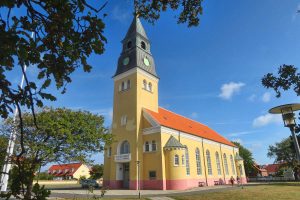
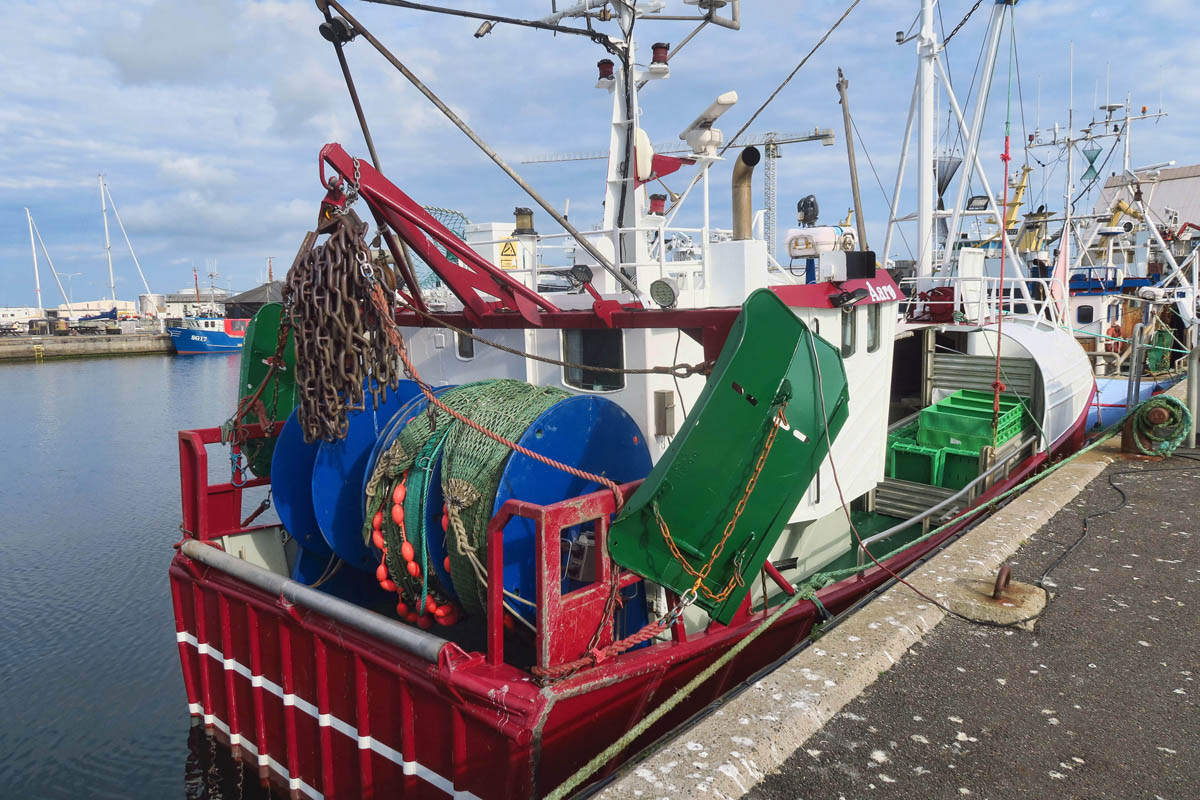
While Skagen is not the leader in the herring industry it once was, it is still serves as a fishing port.
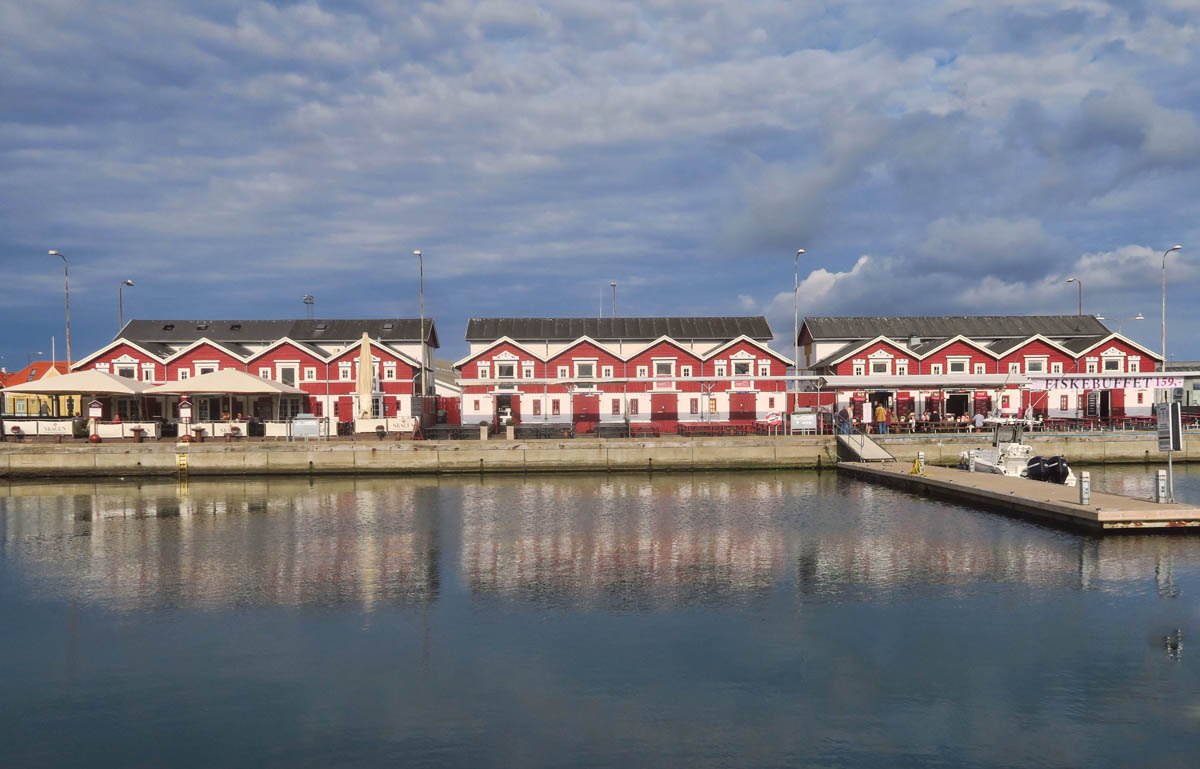
Iconic row of fish pack houses in the Skagen Marina.
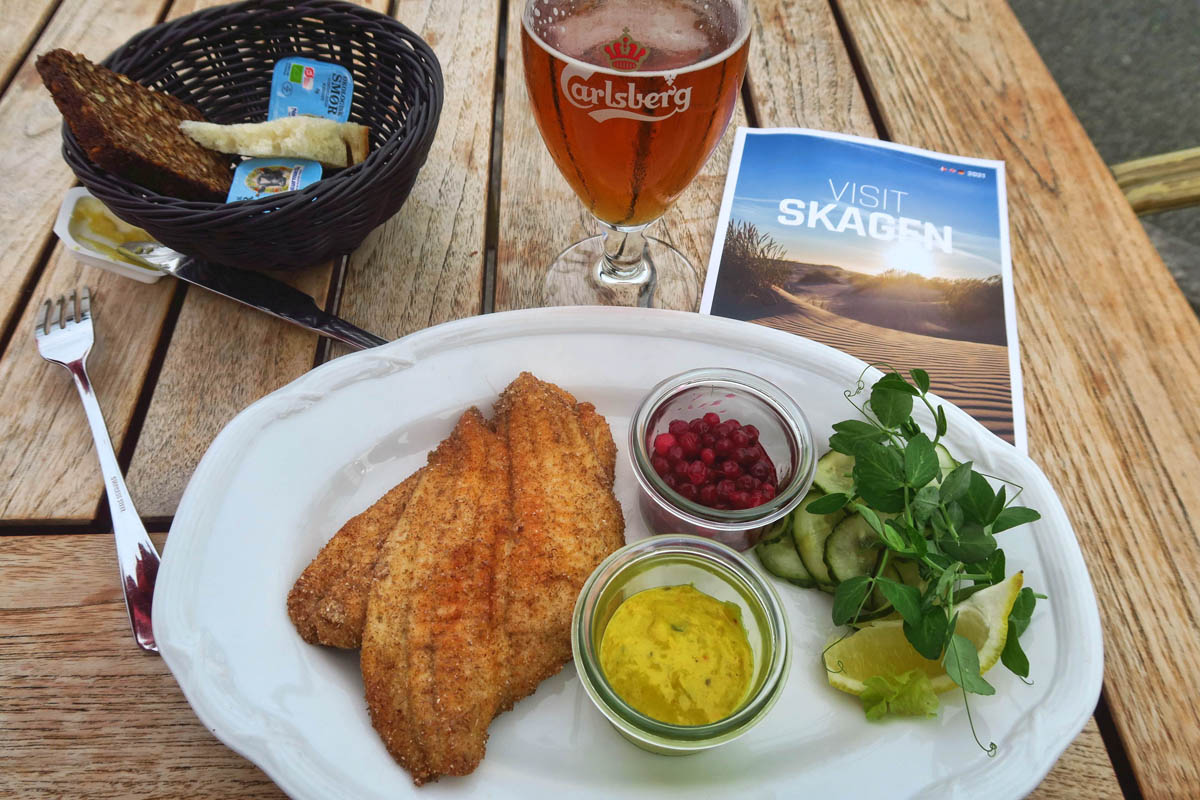
On the recommendation of my Guesthouse host, I had lunch at Pakhuset Restaurant where the special was “Rødspættefileter,” pan-fried filet of plaice (flat fish similar to flounder) served with remoulade, pickled cucumber, and lingonberries
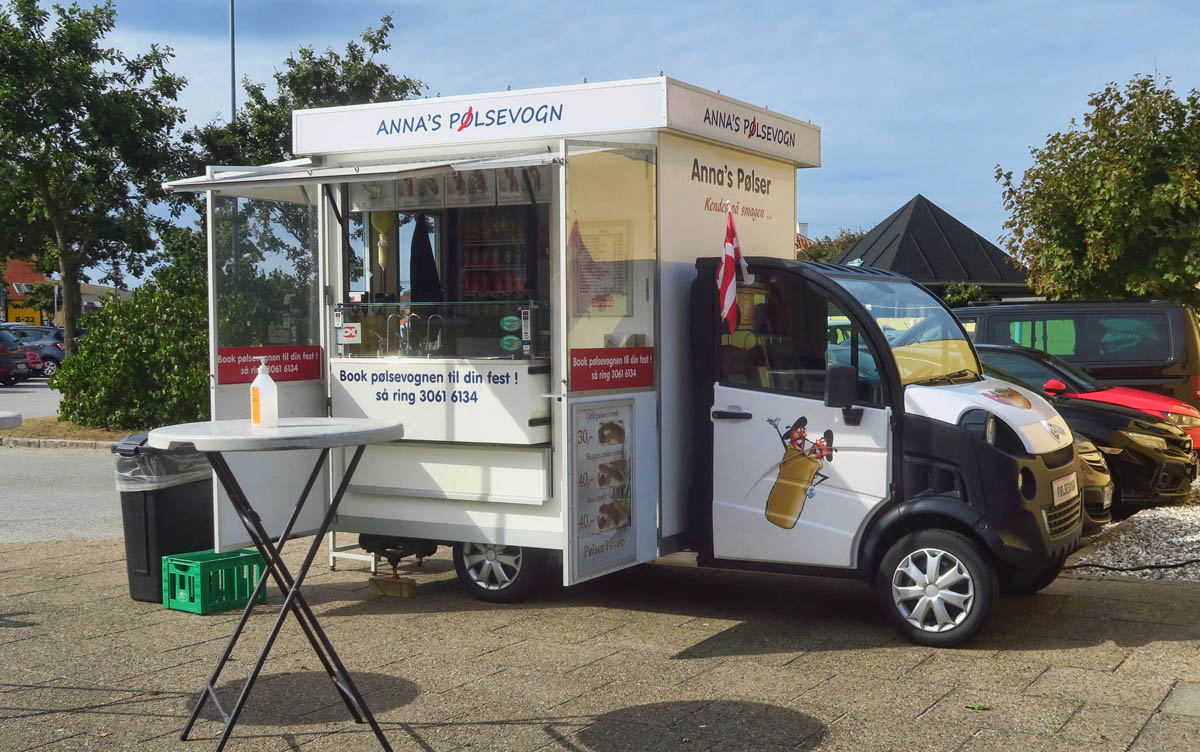
If one doesn’t like seafood, there is always the “Pølsevogn,” which translates to “sausage wagon,” or what we would call a hotdog stand.
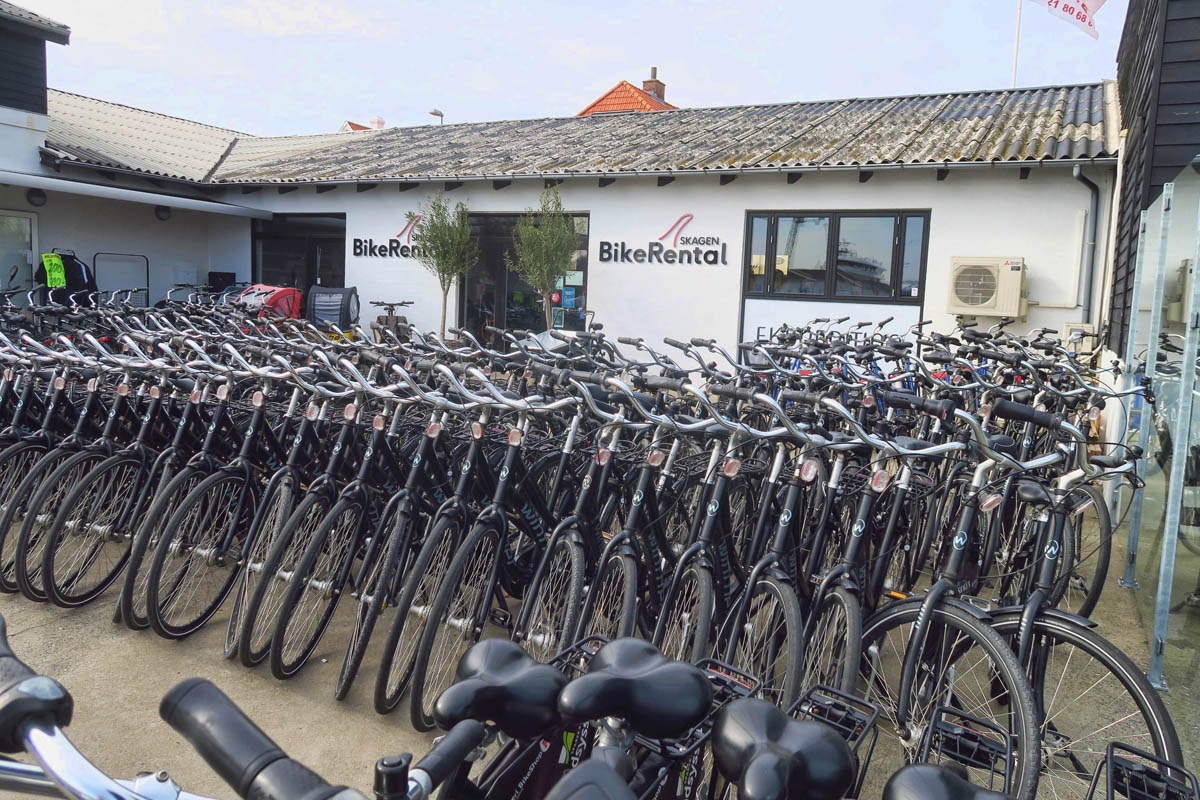
Biking is one of the favorite pastimes in Denmark as evidenced by the number of bikes in this small seaside town.

Skagen is also a gold mine when it comes to lighthouses! This one known as “The Grey Lighthouse” lies 2.5 km (1.5 miles) outside of town in a field of purple.
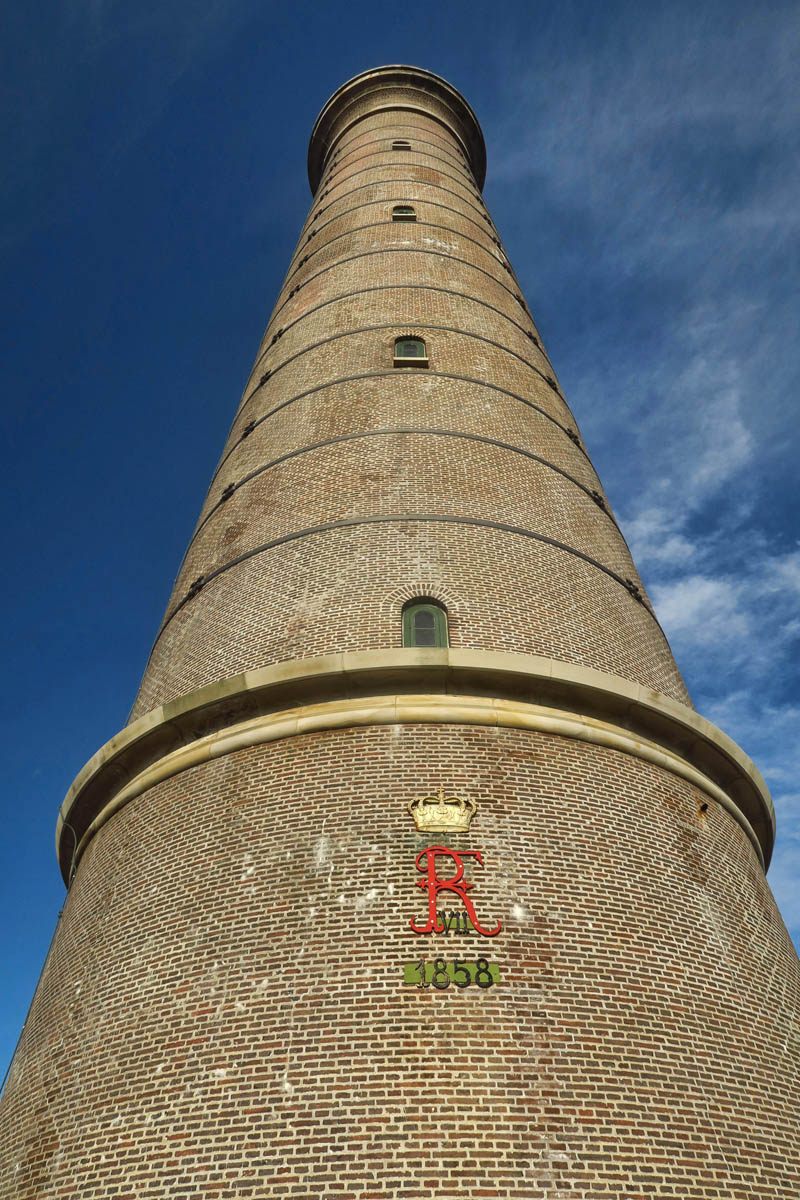
The emblem of the crown, the red “R” and the roman numeral VII at the base is the Royal Cypher for Frederik VII, King of Denmark who ruled at the time the lighthouse was built in 1858.

At 46 meters high (150 ft) it is Denmark’s second tallest lighthouse, losing out for first place by only a meter (3 ft.) It has a two-ton rotating lens resting on mercury that can be seen for 20 nautical miles.
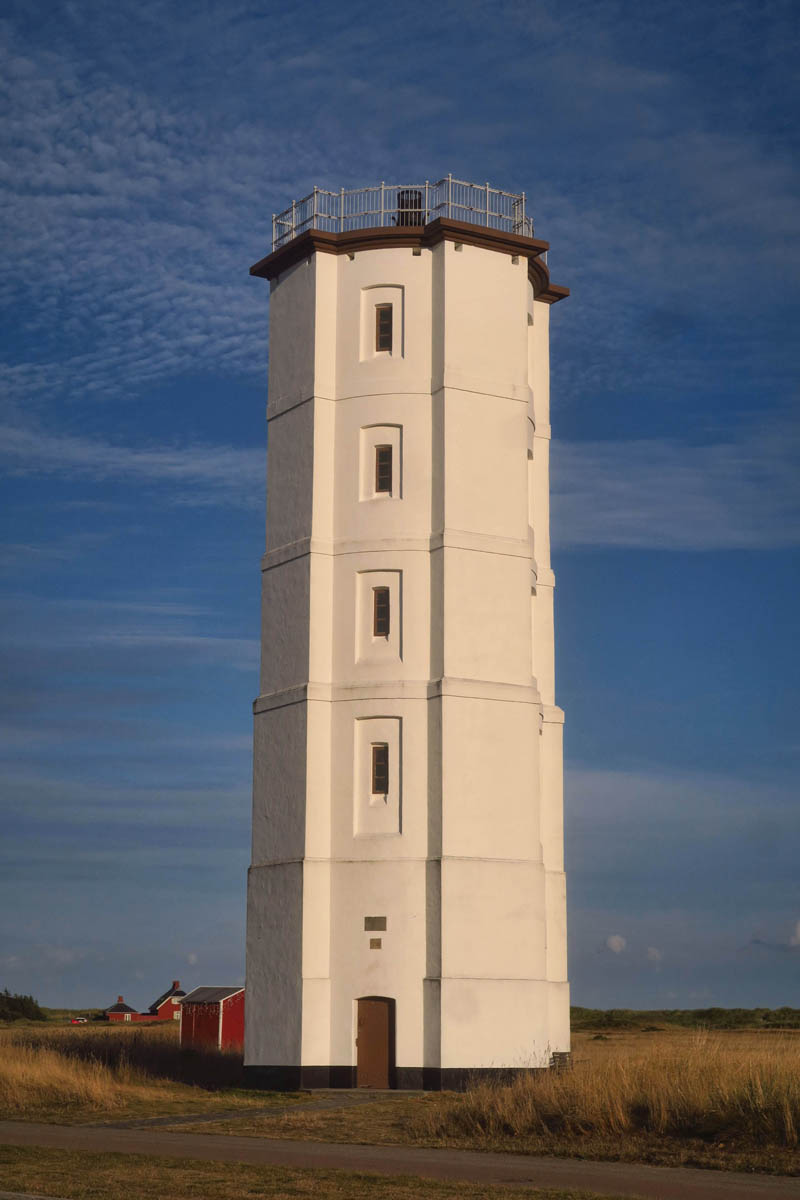
The Grey Lighthouse replaced the “White Lighthouse,” Denmark’s oldest lighthouse first lit in 1747. The lighthouse originally had a closed lantern, but it was feared that the windows would freeze in the winter, thereby concealing the light, so the lantern was replaced with a coal fire until 1816. The structure was built with four staircases to the light basket so the lighthouse keeper could reach the fire on the right side of the wind, thereby avoiding the flames.
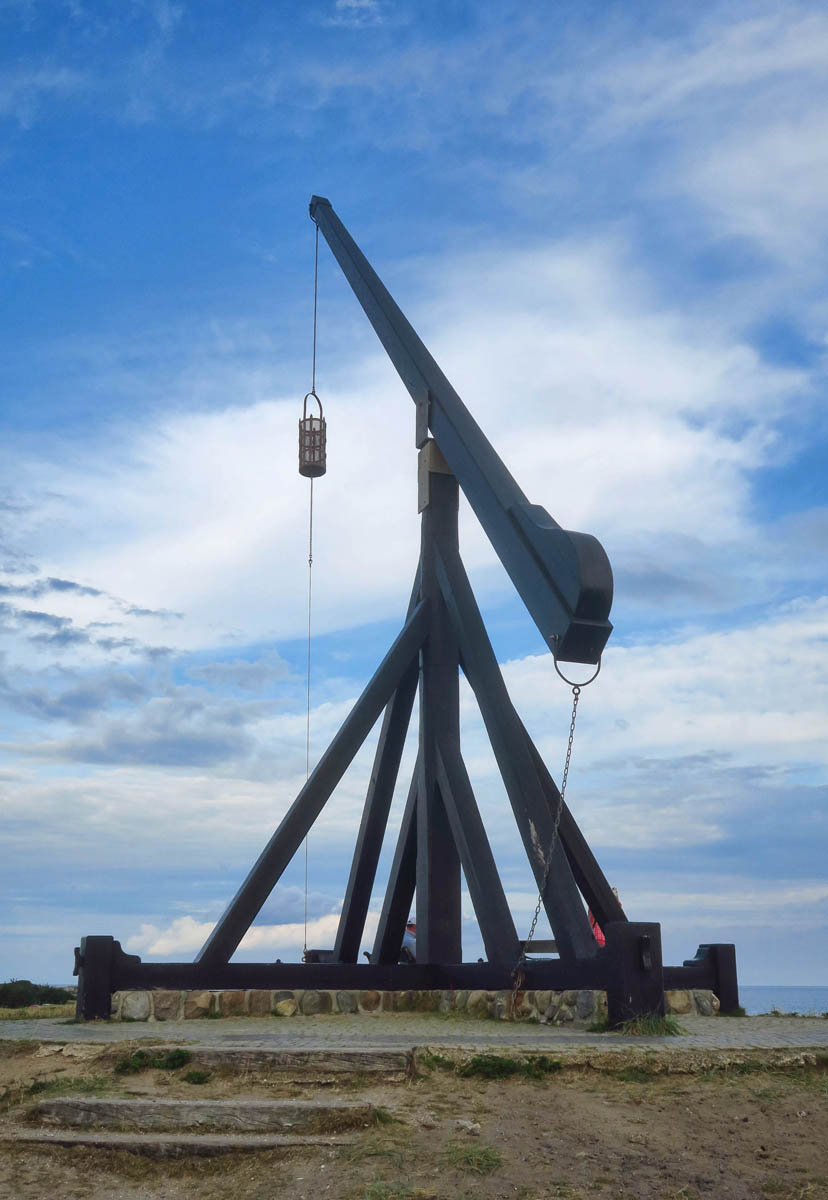
But the most interesting of all of Skagen’s lighthouses was the the “bascule light, built in 1627 to warn of the reef just off shore. The light is operated by tipping the basket down to the ground, filling with flammable material and igniting. The counter weight is used to lift the flaming basket into the air so it is visible by ships. (This one is actually a replica, built in 1958, now lit every year to mark the Midsummer celebration.)

Wonderful descriptions and photos! I too like the mustard-color homes with red tile roofs. Everything has a lovely quaint aura, I need to go there!
Happy New Year.
No wonder Denmark is one of the happiest nations on earth. I love all of it. Thanks for this post I always learn something new from you .
Cool story about how the houses ended up yellow! Love all the lighthouses there, we could spend a week there just visiting them!
You seem to go to the most interesting places.
What a cute little town! I lurve “The Blue Hour” painting and that last lighthouse is awesome! Beyond cool!
What beautiful pictures and descriptions of your adventures. Can’t wait for the next one!
I LOVE that photo of the Grey Lighthouse. It would be lovely on a wall. Beautiful photos of all the buttery yellow buildings. Such a warm color. Much better than white.